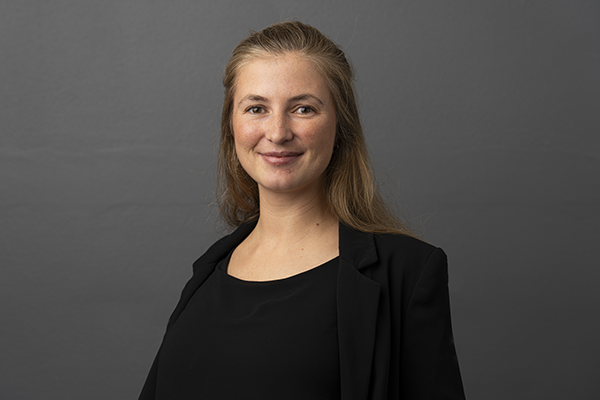Ina Maria Schiessl
Research leader

Project title
From single nephron injury to chronic kidney disease progression - Unravelling of the mechanisms and new targets for treatment
What is your project about?
Chronic kidney disease is characterized by progressing loss of the individual functional units that build the kidneys - the nephrons. In biopsies of chronic kidney disease patients, injured nephrons can be found surrounded by healthy nephrons. However, undamaged nephrons seem to fail to maintain kidney function: over time, more and more nephrons get injured and chronic kidney disease worsens. The mechanisms underneath are incompletely understood, since studying how kidney injury progresses has been hampered by the lack of techniques that allow to follow up upon this process over time and in the same kidney.
To overcome this limitation, I have established a serial microscopy approach to visualize the same kidney areas in the living mouse repeatedly and over several weeks.
I hypothesize that fibrosis emerging around injured nephrons can induce expanding damage in healthy kidney tissue and contribute to disease progression. To test this hypothesis, my lab has developed several novel injury models to induce locally restricted injury in the kidney. Using serial microscopy of the living kidney over several weeks, we will document structural and functional changes over time and assess if and how injury can spread into healthy tissue regions. Finally, we will analyze changes in gene regulation upon focal injury and identify novel strategies to halt progression of chronic kidney disease through drug intervention.
How did you become interested in your particular field of research?
Chronic kidney disease affects approximately 12-15% of the world’s population, cannot be cured and may lead to endstage renal failure with the need for dialysis or transplantation. Ever since my undergrad studies, I have been fascinated by the kidneys for their complexity and physiological impact on the body. Driven by the motivation to better understand disease in these organs, I pursuit a PhD in kidney pathophysiology and became an expert in intravital imaging of the kidneys – a technology that allows to visualize both function and structure at the same time and at subcellular resolution. Realizing the potential of this technique, I further established a serial imaging approach that allows us to follow the same kidney cells for several weeks and thus to decipher disease progression over time. Having this powerful tool at hand, it is my quest to unravel the mechanisms of disease progression in the kidneys and to use these insights to develop new intervention strategies.
What are the scientific challenges and perspectives in your project?
Injury in all kinds of living tissues induces a wound healing reaction that involves increased disposition of extracellular matrix. During chronic disease these mechanisms are increasingly activated, resulting in excessive accumulation of extracellular matrix and loss of functional tissue – a process widely known as fibrosis. While fibrosis is triggered by tissue injury, there is also a wide belief that fibrosis may also act as an independent driver of disease progression. Thus, fibrosis may self-sustain, expand, and deteriorate healthy tissue. Because of this understanding, several antifibrotic drugs have been developed. However, so far these drugs have failed to alleviate chronic kidney disease in clinical trials. Is fibrosis really a driver of kidney disease progression or rather a consequence of it? This question is very difficult to answer as we are facing a classic chicken-egg scenario. In this project, we will for the first time resolve the timely events of kidney disease progression, which will allow us to unravel the role of fibrosis in chronic kidney disease.
What is your estimate of the impact, which your project may have to society in the long term?
The results from this project will substantially expand our mechanistic understanding of nephron loss, determine the role of fibrosis in disease progression and discover new signaling pathways of disease progression that could be pharmaceutically targeted. Thus, the long-term impact of this study will involve the development of specific inhibitors/stimulators to newly identified pharmaceutical targets with the goal of halting chronic kidney disease progression and thereby reducing morbidity, mortality, and the associated significant financial burden on public health care systems.
Which impact do you expect the Sapere Aude programme will have on your career as a researcher?
I am incredibly honored to have received this recognition. The Sapere Aude: DFF-Starting Grant is a highly prestigious program that will increase the visibility of my research. This will help to continuously attract bright minds to my research group, strengthen interdisciplinary collaborations, and ensure that we can pursuit high quality research at the forefront in this field.
Background and personal life
In late 2019, my husband and I moved from California to Denmark and founded a wonderful family here. Together with our daughter, Romy and our son, Maximilian, we live on Aarhus Ø and are trying to avoid exchanging the waterfront (which we adore so much) for more living space for as long as possible. We love nature and spend most of our free time outside, exploring beaches, forests, animals and lots of playgrounds.
View all research leaders here
Research institution
Aarhus University
Research field
Kidney research
City of your current residence
Aarhus
High school
Hans-Leinberger-Gymnasium, Landshut, Germany
